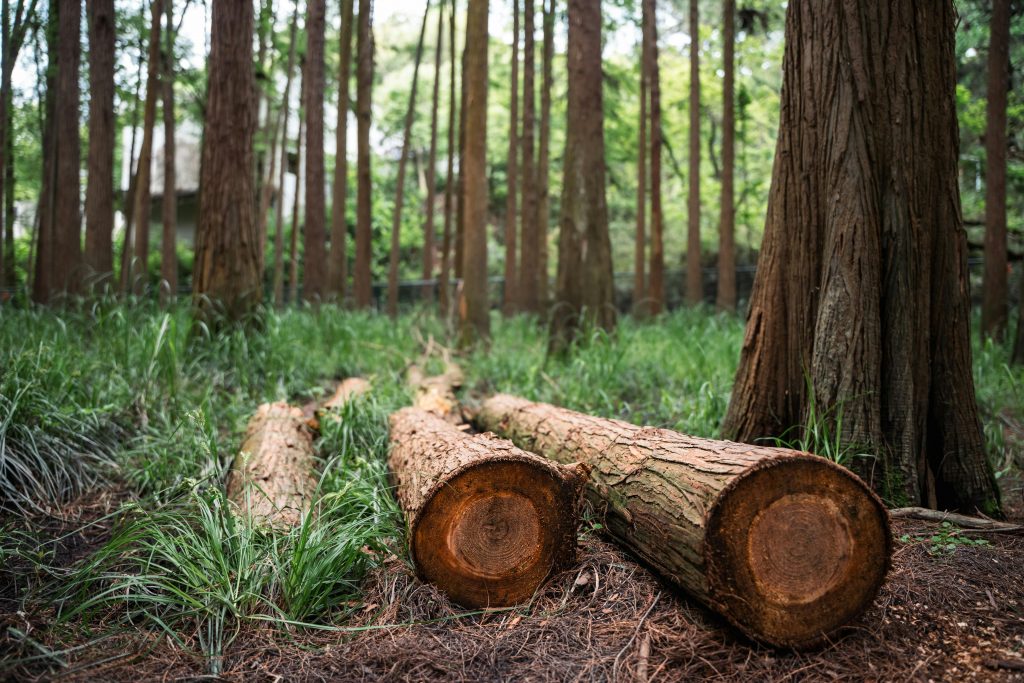
December 3, 2025

Noriaki Yamada, Yamada Noriaki Structural Design Office (YSD)
I have been mainly involved in structural design and technology development projects for various local public wooden buildings using lumber from each region and traditional wooden structures. I have not had the opportunity to work on high-rise wooden buildings in urban areas.
In recent years, I have been involved in a parallel project to develop technology for wooden pre-stressed structures and building structures with the construction of high-rise wooden buildings in mind, and I have realized a three-story wooden laboratory (i.e., a new research building at Sumitomo Forestry Tsukuba Research Institute, 2019) using this technology. In addition, I am planning to be involved in a project to construct a high-rise wooden office building of about ten stories overseas.
While studying architecture in Kyoto as a university student, I became interested in historical wooden architecture that was familiar to me. Therefore, I chose Prof. Hidekazu Nishizawa’s laboratory, which conducts structural research on historical wooden structures. I have studied wooden architecture engineering deeply through projects such as the restoration of the Grand Lecture Hall of Yakushiji Temple, in which the laboratory was involved.
Based on my experience in this laboratory, I chose the structural design office led by Kazuma Masuda, one of the pioneers in structural design of wooden architecture, as my place of employment. At Masuda’s office, I had the opportunity to work with architects to challenge the engineering and design of new wooden buildings and learn carpentry philosophy and techniques from the master carpenters specializing in temples and shrines through the design and supervision of traditional wooden buildings.
Last year, in Japan, the Act for Promotion of Use of Wood was revised to expand the scope of promotion for the transition to wooden structures and materials not only to public buildings but also to private buildings, with the aim of achieving carbon neutrality.
This is expected to lead to further technological development in structure, fire safety and sound insulation for the construction of high-rise wooden buildings. On the other hand, the increase in the cost of high-rise wooden buildings remains a problem, and combined with the recent wood shock, it is becoming increasingly difficult to make wooden buildings feasible. As a result, the demand for hybrid structures combining wooden materials with steel or concrete is expected to further increase in the future. It is not always reasonable to build all components of high-rise wooden buildings exclusively with wooden materials. Rational hybridization will be required in any aspects, such as the development of materials and components, and devising of structural systems. To promote this hybridization, I believe it is particularly important to build a new supply chain through close collaboration among different industries.
At the same time, effective utilization of standing timber that has grown to large diameters after the rotation logging age in Japan has become an issue. There is a movement to establish a production system for large-diameter lumber. To this end, it is essential to (1) develop drying technology, (2) establish standard dimensions and (3) develop general-purpose structural technology, all of which are being carefully promoted together.
I am a structural engineer, so my main work is in the structural design of buildings. But I believe that roles other than structural design are also important, especially in the structural design of wooden buildings. For example, dialogue with wood producers in the forestry, sawmilling and processing industries is important for procuring timber without difficulty. Structural engineers are increasingly playing the role of wood coordinator between wood producers, clients and architects. In addition, the optimal solution that engineers derive will vary depending on the conditions and task set. While the study of professional skills is of utmost importance for structural engineers, they are increasingly expected to broaden their perspective on global environmental and social issues, such as decarbonization and forestry sustainability, and to input more information into their structural design work in the future. I recommend that young professionals continue to accumulate their daily study so that they can have a high awareness and broad network to practice these.
The most attractive feature of mass timber is that large-sized components with excellent dimensional stability can be manufactured. I am interested in the high-rise building projects underway around the world that take advantage of mass timber, such as the headquarters building of Atlassian in Sydney, Australia, and the W350 planned by Sumitomo Forestry in Japan.
Another attractive feature of mass timber is its high homogeneity as a material. Most wooden materials, including lumber and logs, are highly anisotropic, and mass timber makes structures possible that would be impossible to achieve with these materials. The attempts of the Institute for Computational Design and Construction (ICD) at the University of Stuttgart to put the design and construction of biological-like organic forms and junctions using the homogeneity of mass timber and robotic fabrication techniques into practice are interesting. Previous attempts at ICD have used plywood, but I am looking forward to seeing what kind of structure can be achieved with larger-sized mass timber.